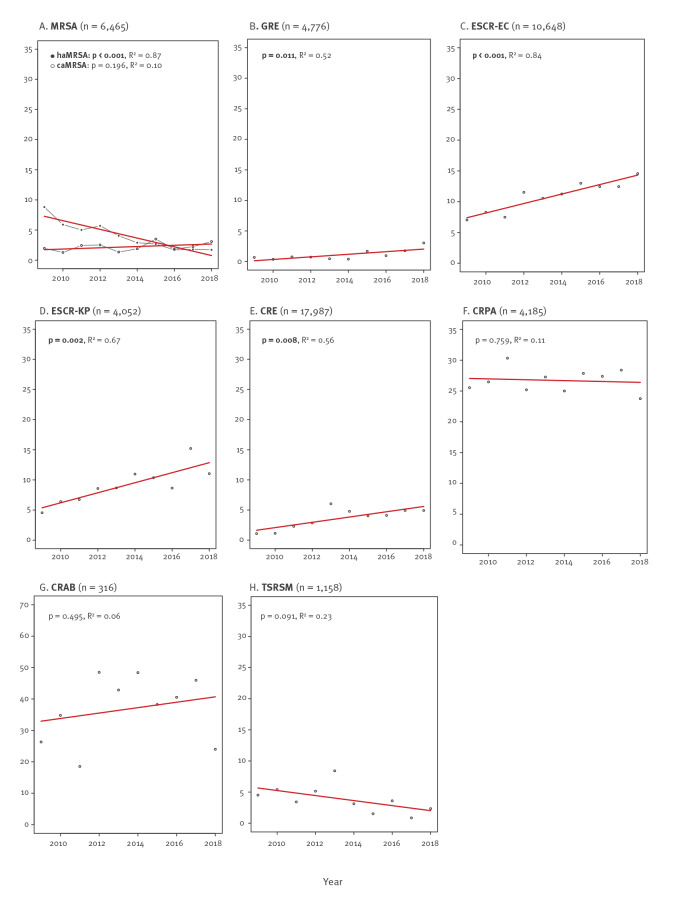Figure 2.
Trends in resistant pathogens in intensive care, Switzerland, 2009–2018 (n = 34,887)
caMRSA: community-acquired MRSA; CRAB: carbapenem-resistant Acinetobacter baumannii complex; CRE: carbapenem-resistant Enterobacterales; CRPA: carbapenem-resistant Pseudomonas aeruginosa; GRE: glycopeptid-resistant Enterococcus faecalis/faecium; ESCR-EC: extended-spectrum cephalosporin-resistant Escherichia coli; ESCR-KP: extended-spectrum cephalosporin-resistant Klebsiella pneumoniae; haMRSA: hospital-associated MRSA; MRSA: meticillin-resistant Staphylococcus aureus; TSRSM: trimethoprim-sulfamethoxazole-resistant Stenotrophomonas maltophilia.
Y axes show % of resistant (note the different scale for the y axis in panel G). Please note that E. coli and K. pneumoniae isolates were used for both the analysis on ESCR and carbapenem resistance. The number of all isolates (sensitive and resistant) is indicated in brackets (n). P values ≤ 0.05 were considered statistically significant (in bold).

